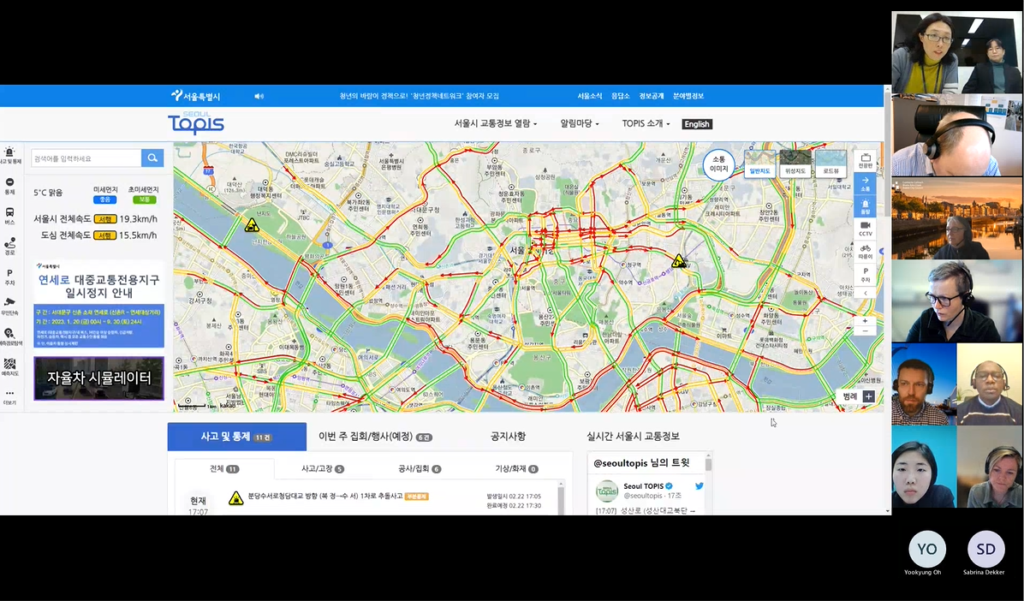On 22 February, Seoul and Dublin successfully held an online bilateral meeting on urban transportation information and management system. The IURC programme organized the event to exchange technical knowledge of traffic information systems in two cities.
Seoul Metropolitan Government kicked off the meeting by presenting Transport Operation and Information Service (TOPIS), Seoul’s comprehensive transportation management center that oversees the city’s overall transport situation. TOPIS was established in 2004 to connect and integrate traffic information and transport systems through scientific traffic administration support. Seoul briefly presented its TOPIS website, pointing out some of the main features and information it provides to the public, including the status of expressways, traffic density, traffic speeds, and other information related to transportation. Moving on, Dublin City Council shared its Intelligent Transportation Systems (ITS), which collects real-time data from over 800 signals with SCATS and produces visualizations. For example, Dublin uses data maps for real-time traffic overlook and graphs for traffic trend tracking.
In between the presentations, Seoul and Dublin had time for discussion. Insightful questions and answers were raised during this session. First, Dublin expressed its impressiveness on the extent of data integrated into the TOPIS system and asked related questions about the procedural background of its establishment and operations. Seoul shared that it took around 20 years to build the system, and it now operates with ten different companies for technical maintenance and 30 employees in the Futuristic Advanced Transportation Division. Dublin raised curiosity about the accuracy rate of the traffic prediction system by TOPIS, which predicts what traffic will look like in the near future. Seoul proudly answered that predictions by TOPIS are largely accurate, with around 90% accuracy, as they are based on historical traffic patterns for roads over five years. Seoul also asked Dublin about how traffic lights in the relatively bigger streets with 4-5 lanes and junctions are organized in Dublin. Dublin shared that it sets up different regions across the city based on different traffic profiles and prioritizes the functions traffic signals should be fulfilled, for example, bus priority, tram priority, etc.
During the meeting, an important issue about cyber and data security was raised by Dublin, which both cities hope to work on in the future. With the sharing from each other, Seoul and Dublin are expected to take the strengths and improve their urban transportation information and management system.
This article has been written by Program Assistant Yejin Lee.
CityNet is an association of urban stakeholders committed to sustainable development in the Asia Pacific region. Established in 1987 with the support of UNESCAP, UNDP and UN-Habitat, the Network of cities has grown to include over 160 municipalities, NGOs, private companies and research centers. We connect actors, exchange knowledge and build commitment to establish more sustainable and resilient cities. Through capacity building, city-to-city cooperation and tangible projects, we help our members respond to Climate Change, Disaster, and the Sustainable Development Goals.


